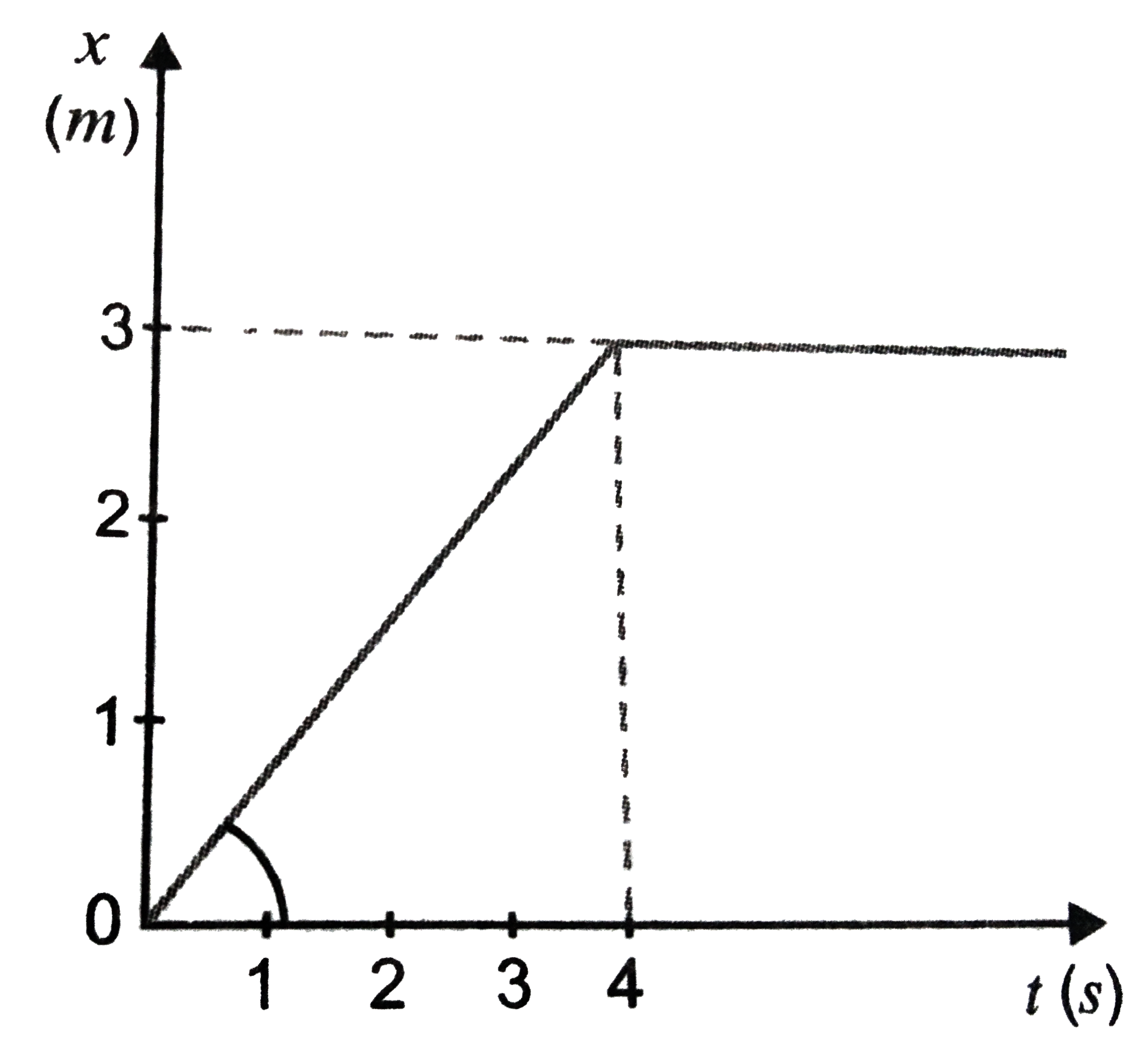The velocity of a body of mass 2kg as a function of t is given by υ(t)=2tˆi+t2ˆj Find the momentum and force acting on it at time t=2s.
To solve the problem step by step, we will find the momentum and force acting on a body of mass 2 kg with the given velocity function υ(t)=2t^i+t2^j at time t=2 seconds.
Step 1: Find the velocity at t=2 seconds
The velocity function is given as:
υ(t)=2t^i+t2^j
Substituting t=2:
υ(2)=2(2)^i+(22)^j=4^i+4^j
Step 2: Calculate the momentum
Momentum P is given by the formula:
P=m⋅v
where m is the mass and v is the velocity. Given that the mass m=2 kg and v=4^i+4^j:
P=2⋅(4^i+4^j)=8^i+8^j
Step 3: Find the acceleration
Acceleration a is the derivative of the velocity with respect to time:
a=dvdt
Differentiating the velocity function:
a=ddt(2t^i+t2^j)=2^i+2t^j
Step 4: Calculate the acceleration at t=2 seconds
Substituting t=2:
a(2)=2^i+2(2)^j=2^i+4^j
Step 5: Calculate the force
Force F is given by:
F=m⋅a
Using m=2 kg and a=2^i+4^j:
F=2⋅(2^i+4^j)=4^i+8^j
Final Results
- Momentum at t=2 seconds:
P=8^i+8^j kg m/s
- Force at t=2 seconds:
F=4^i+8^j N
The velocity function is given as:
υ(t)=2t^i+t2^j
Substituting t=2:
υ(2)=2(2)^i+(22)^j=4^i+4^j
Momentum P is given by the formula:
P=m⋅v
where m is the mass and v is the velocity. Given that the mass m=2 kg and v=4^i+4^j:
P=2⋅(4^i+4^j)=8^i+8^j
Acceleration a is the derivative of the velocity with respect to time:
a=dvdt
Differentiating the velocity function:
a=ddt(2t^i+t2^j)=2^i+2t^j
Substituting t=2:
a(2)=2^i+2(2)^j=2^i+4^j
Force F is given by:
F=m⋅a
Using m=2 kg and a=2^i+4^j:
F=2⋅(2^i+4^j)=4^i+8^j
- Momentum at t=2 seconds:
P=8^i+8^j kg m/s
- Force at t=2 seconds:
F=4^i+8^j N
Topper's Solved these Questions
- LAWS OF MOTIONBOOK - NCERT EXEMPLAR ENGLISHCHAPTER - LAWS OF MOTIONEXERCISE - Short answer type questions
6 Videos
- LAWS OF MOTIONBOOK - NCERT EXEMPLAR ENGLISHCHAPTER - LAWS OF MOTIONEXERCISE - Long answer Type Questions
9 Videos
- LAWS OF MOTIONBOOK - NCERT EXEMPLAR ENGLISHCHAPTER - LAWS OF MOTIONEXERCISE - Mutiple Choice Questions (More than One Options)
6 Videos
- KINETIC THEORYBOOK - NCERT EXEMPLAR ENGLISHCHAPTER - KINETIC THEORYEXERCISE - Multiple Choice Questions (MCQs)
31 Videos
- MECHANICAL PROPERTIES OF FLUIDSBOOK - NCERT EXEMPLAR ENGLISHCHAPTER - MECHANICAL PROPERTIES OF FLUIDSEXERCISE - Long Answer Type Questions
3 Videos
Similar Questions
Knowledge Check
The position time graph of a body of mass 2kg is as given in What is the impulse on the body at t=0 s and t=4s ?
 . A23kgms−1B−23kgms−1C32kgms−1D−32kgms−1
. A23kgms−1B−23kgms−1C32kgms−1D−32kgms−1
The position (x) of a particle of mass 1 kg moving along x-axis at time t is given by (x=12t2) meter. Find the work done by force acting on it in time interval from t=0 to t=3 s.
View SolutionThe position (x) of a particle of mass 1 kg moving along x-axis at time t is given by (x=12t2) metre. Find the work done by force acting on it in time interval from t=0 to t=3 s.
View SolutionThe position (x) of a particle of mass 2 kg moving along x-axis at time t is given by x=(2t3) metre. Find the work done by force acting on it in time interval t=0 to t=2 is :-
View SolutionThe time dependence of the position of a particle of mass m = 2 is given by →r(t)=2tˆi−3t2ˆj Its angular momentum, with respect to the origin, at time t = 2 is :
View SolutionThe time dependence of the position of a particle of mass m = 2 is given by →r(t)=2tˆi−3t2ˆj Its angular momentum, with respect to the origin, at time t = 2 is :
View SolutionThe velocity vector of the motion described by the position vector of a particle, r=2tˆi+t2ˆj is given by
View SolutionThe momentum of a body in two perpendicular direction at any time 't' are given by Px=2t2+6 and Py=3t22+3. The force acting on the body at t= 2 sec is
View Solution